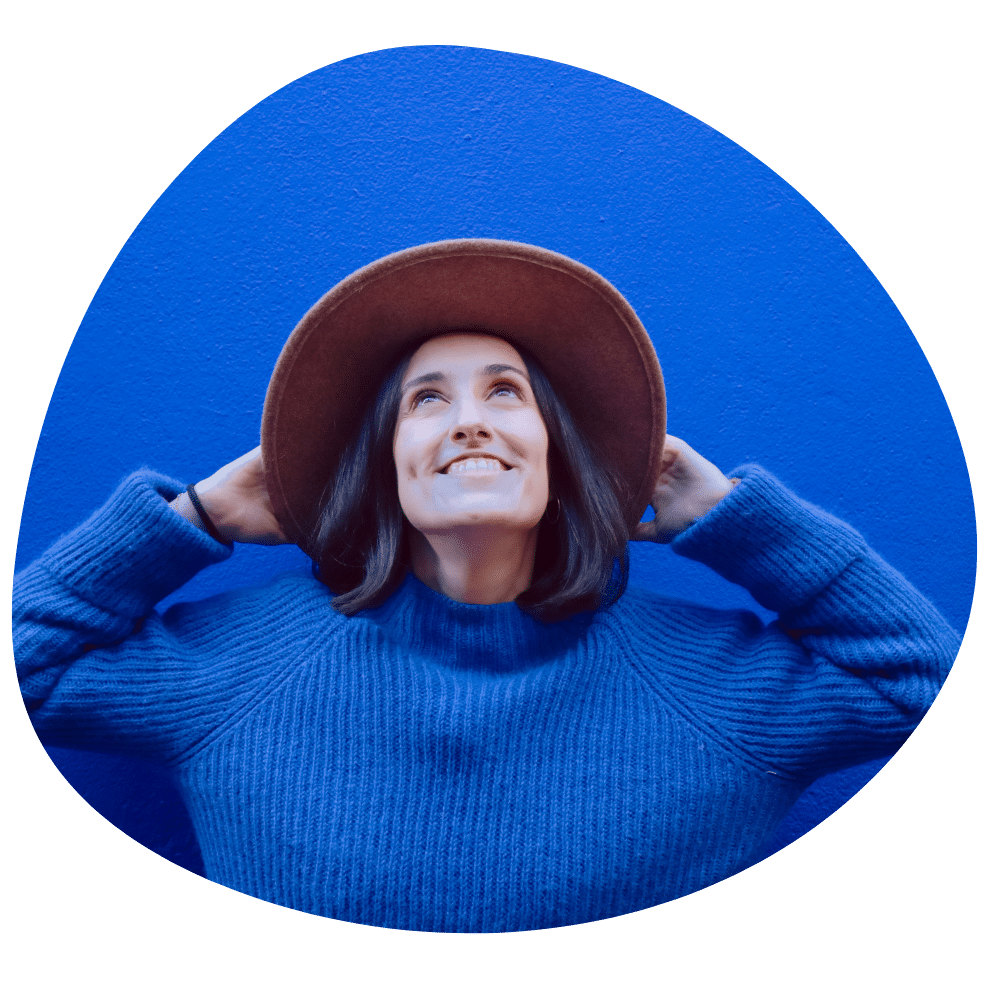Pompeii is one of the most intriguing sites in Italy. It’s a real journey back in time and a must-see in southern Italy. So keep reading to find out what to know before visiting Pompeii.
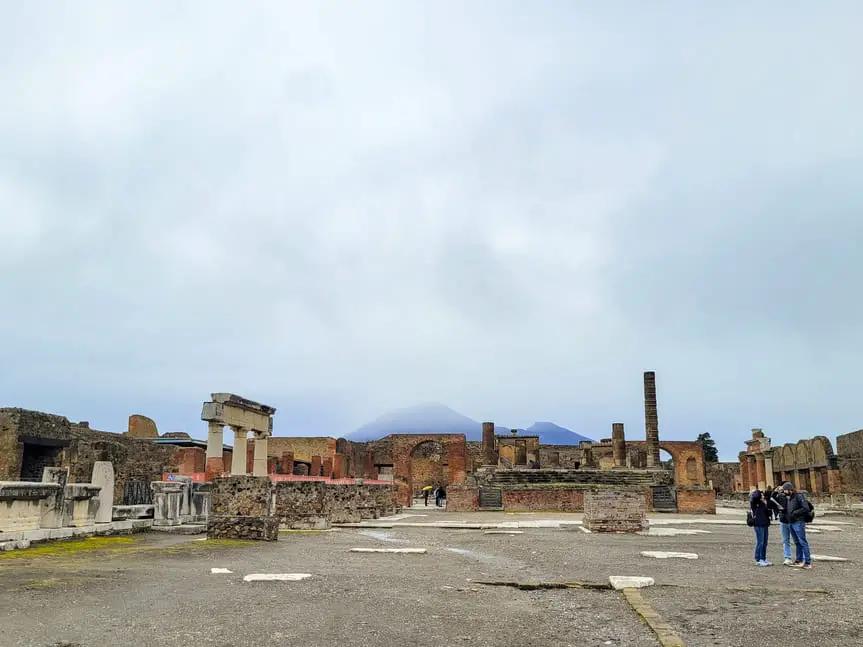
The city of Pompeii, which once belonged to the Roman Empire, is famous because it was completely destroyed by an eruption of the Vesuvius volcano in 79 AD. What makes it so special is that the ash, which covered the entire city, made it possible for the city to remain intact for over 1000 years.
It wasn’t until the 16th century that Pompeii was found under the ashes. This discovery would be a breakthrough, giving privileged and very detailed access to what life would have been like in Ancient Rome. The fact that the city had been “buried” for so many years allowed the artefacts and buildings to be excellently preserved.

Pompeii Archaeological Park has around 2.5 million visitors a year. It’s easy to understand why this is one of the most visited sites in Italy. After all, Pompeii is almost like a window that allows you to travel back in time. The city was “frozen” all those years ago and is now there for us to learn more about how life was like back then.


As you might expect, Pompeii is a UNESCO World Heritage Site. So exploring Pompeii should be almost mandatory, at least once in your life.

So, I am writing this post so you understand what you should know before visiting Pompeii. Throughout this post, I’ll provide all the tips so you can organise a trip to Pompeii, including:
- How to get to Pompeii
- Best place to stay for visiting Pompeii
- How much does it cost to visit Pompeii
- What to visit in Pompeii
- How much time to visit Pompeii
- Best time to visit Pompeii
What is Pompeii’s history?
The history of Pompeii begins long before the Roman Empire. The city was founded in the 7th century BC by people from central Italy. It wasn’t until years later that it belonged to the Roman Empire, and around 20.000 people lived there.

Although this was an area where earthquakes were frequent, the fertility of the soil meant that for so many years the city was sought after by various populations. In fact, there was a huge earthquake that destroyed a large part of the city and, consequently, led many of its inhabitants to abandon Pompeii.

However, another group of inhabitants stayed in Pompeii to recover the city. And these would be the vast majority of those who would die after Mount Vesuvius erupted in 79 AD.
The eruption at Pompeii spread a cloud of rock, ash and smoke, which quickly reached the city. In fact, contrary to what many films portray, Pompeii was not hit by lava, but by this pyroclastic flow that hit the city at extremely high temperatures, causing the death of the city’s inhabitants by inhaling the hot ash.

However, it took centuries before Pompeii was discovered again under all the materials that covered it and that, simultaneously, allowed everything to remain intact for so many years. It wasn’t until the end of the 16th century, when excavations were being carried out for the construction of an underground canal, that traces of this ancient city were accidentally discovered.


However, it wasn’t until the 18th and 19th centuries that more professional excavations began. In fact, it was at this time that archaeologist Giuseppe Fiorelli developed the famous technique that gave shape to the bodies found in Pompeii.
When people talk about Pompeii, they usually see images of the petrified bodies in their final position. However, these are not actually the bodies of Pompeii’s victims. In reality, these bodies are a plaster-based mould. This plaster was injected into the cavities created in the space where the inhabitants of Pompeii died.

The shape of many of these bodies is absolutely striking, as it allows us to see perfectly the position of the victims of Pompeii just before they died.
Where is Pompeii?
Pompeii is located very close to Naples in southern Italy. The city of Naples is located less than 30 kilometres from the ruins of Pompeii. In fact, it’s quite common to combine a visit to Naples with a day trip to Pompeii. This is because it’s very easy (and relatively quick) to travel between these two cities, even by public transport (more on that later!).

However, even though it’s further away, many people also decide to visit Pompeii from Rome. The distance between Rome and Pompeii is around 250 km.
💡 EXTRA TIP: If you’re travelling to Pompeii with large backpacks (or even suitcases), here’s a tip: there is a maximum size for the backpacks you’re allowed to carry into the site. You can store your backpacks/suitcases at the entrance gates to Pompeii or, alternatively, at the Pompei Scavi train station.
Is Pompeii worth visiting?
Whether you know a lot or very little about history or archaeology, one thing is certain: despite resulting from a tragedy, Pompeii is a real treasure that gives us an unparalleled glimpse of what life was like there more than 1.000 years ago. Few places in the world allow us to travel back in time with such precision.

I don’t know about you, but I find this absolutely fascinating! And bear in mind that I’m not a great expert on history, let alone archaeology.

Visiting Pompeii should be on your bucket list and it’s actually a great addition to any southern Italy itinerary, for example.
However, although Pompeii is always worth seeing, to get the most out of your visit, I suggest booking a guided tour of the site. For example, I booked this 2-hour tour with a specialised archaeologist and I think it made a huge difference 🥰.
What is the best time of year to visit Pompeii?
The city of Pompeii is open almost every day of the year. So any time of the year is a good time to visit the fantastic ruins of Pompeii.
However, this region of Italy is known for excessively high temperatures in summer. Since the site is very large and has very few shades (the few that exist are located inside the houses), this may not be the most pleasant time of the year to visit Pompeii.


However, it is precisely in summer that the site receives the most visitors. So it’s not impossible to visit Pompeii in summer. You simply have to take a few precautions, such as:
- Bring sunglasses and a cap/hat
- Carry plenty of water to ensure you are properly hydrated
- Wear sunscreen and clothing that protects you from the harsh sun
- Wear comfortable shoes
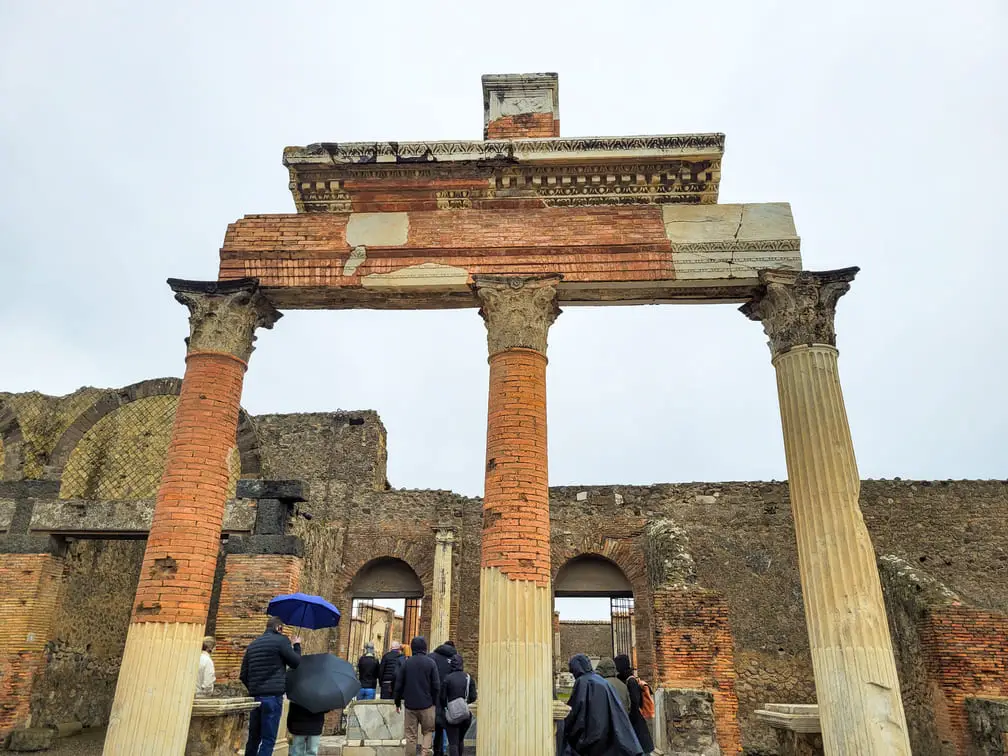
For example, I chose to visit in January and was very unlucky with the weather. It was raining, quite cold and there were strong gusts of wind, which made the visit less enjoyable.
How to get to Pompeii?
Pompeii is located in the Campania region, in southern Italy. The closest major cities to Pompeii are Rome and Naples, with Naples being significantly closer. Besides the more comfortable option of travelling to Pompeii by car, I’ll explain how to get to Pompeii by public transport below.

Visiting Pompeii from Naples
Naples is only 30 kilometres from Pompeii. The easiest way to get to Pompeii from Naples is by taking the Circumvesuviana train to Sorrento, which takes around 30 minutes.
You can get on this train at two stations in Naples: Naples Central Station (Garibaldi) or Porta Nolana. In the more touristy months, I suggest boarding the train at Porta Nolana station, as this is where the journey starts, which increases your chances of getting a seat.
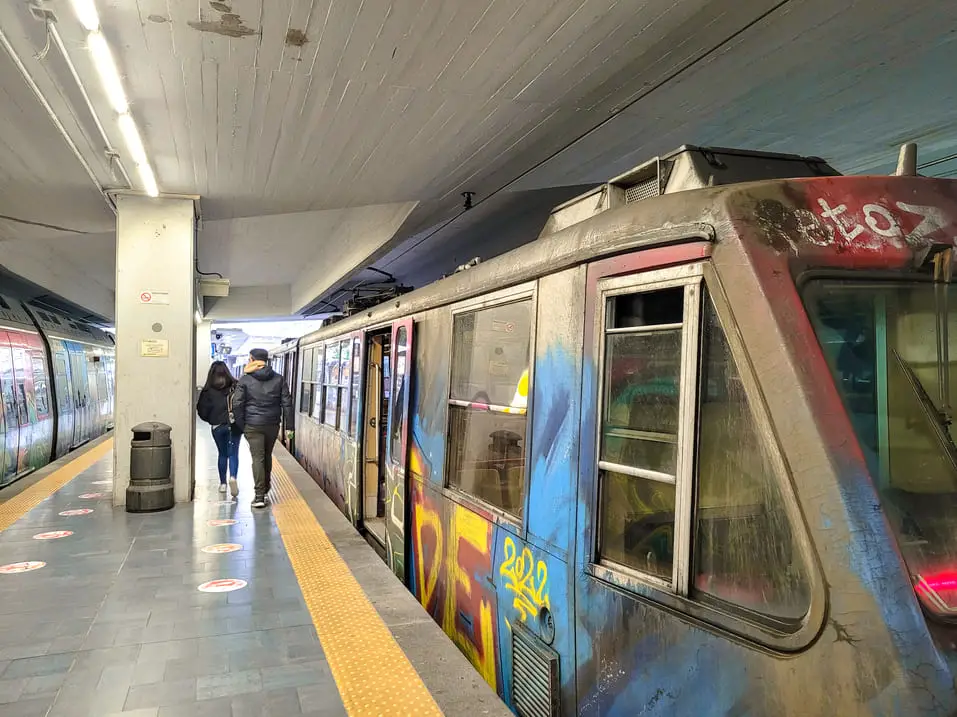
The trains are more like a metro and some are in pretty bad shape. However, the journey is relatively short, so this is a minor issue 😜.
The ticket for the train must be bought directly at the railway station and costs 3.3€ (when I visited, they only accepted cash). From what I understand, there seems to be an app that also allows you to buy these tickets, but I didn’t use it.
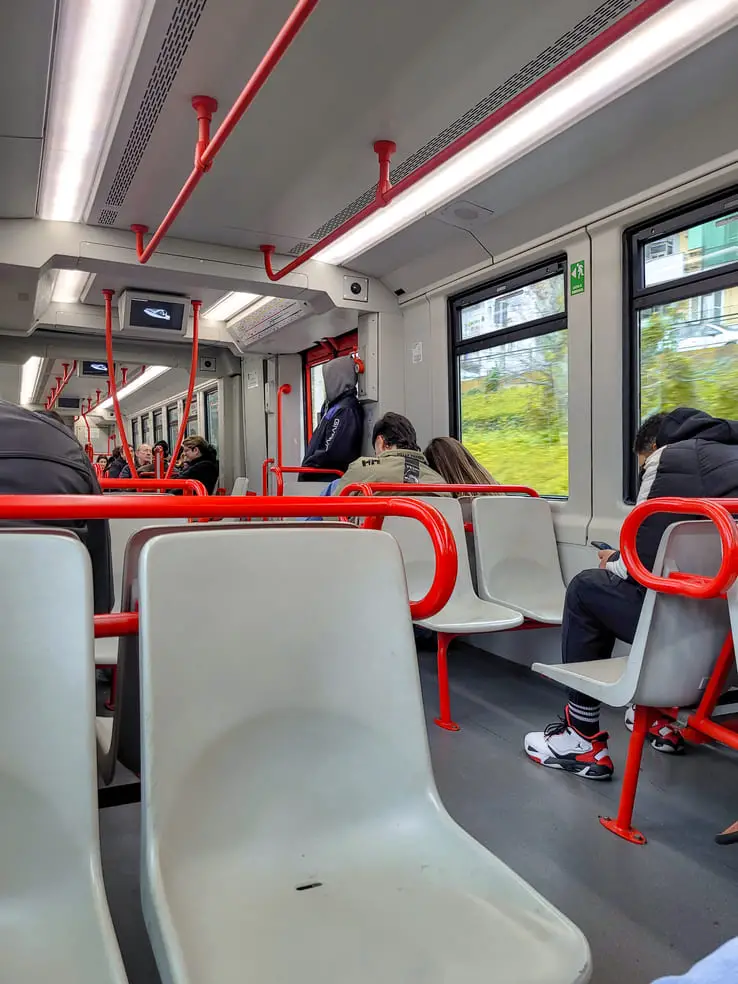
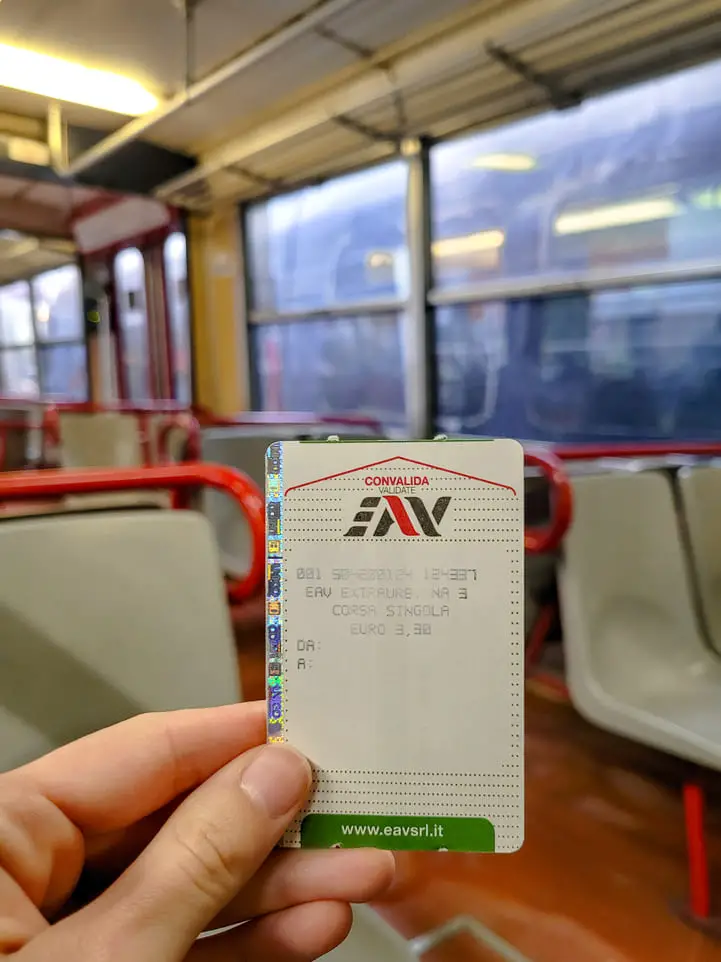
After 30 minutes of travelling with Vesuvius getting closer and closer, you should get off at Pompei Scavi – Villa dei Misteri stop. The railway station is quite small and only a 2-minute walk from Porta Marina entrance to Pompeii. When I visited, I relied on the timetables on this website, which were correct at the time.

To return to Naples, you can do so directly from this station, where you can buy your return tickets. The station has toilets and a small café where you can buy some snacks. There is also a luggage drop-off point at this station, should you be interested.
💡 EXTRA TIP: As soon as I entered the station, they tried to sell me tickets to visit Pompeii. If you haven’t bought your tickets yet, only do so at the official ticket office, which is just a few metres from the train station.
Finally, if you don’t want to bother with the logistics of taking the train and prefer a more leisurely journey, I recommend this half-day tour of Pompeii, departing from Naples. There is also an option that includes a visit to Mount Vesuvius, which is also something quite interesting you can do nearby.
Visiting Pompeii from Rome
The trip from Rome to Pompeii takes a little longer, but it’s also relatively easy, especially if you take the train.
One of the options is to take one of the Trenitalia high-speed trains that connect Rome Termini and Napoli Centrale. Although the cities are more than 200 kilometres apart, these high-speed trains take just 1h15.
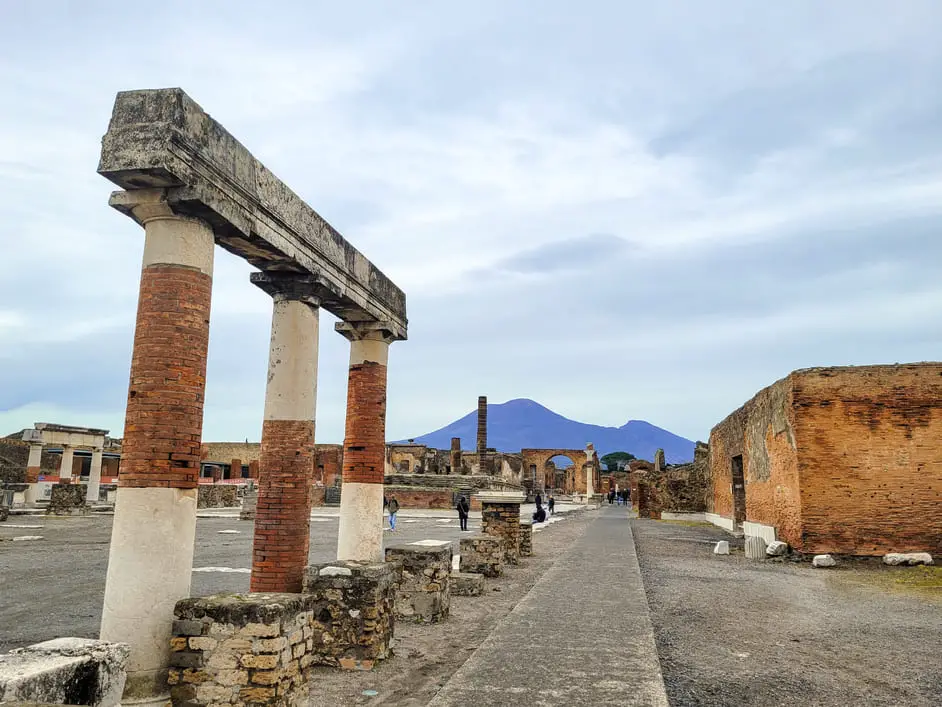
The price of this high-speed train journey is slightly higher than other slower options and starts at 25€. I suggest buying your ticket in advance to secure the best prices. There are several timetables available every day.
💡 EXTRA TIP: I suggest you also check the ticket prices for Italo’s fast trains from Roma Termini to Napoli Centrale, as they sometimes have more competitive prices than Trenitalia.
Once in Naples, follow the steps above to get from Naples to Pompeii, i.e. take the Circumvesuviana train to Sorrento and get off at Pompei Scavi. In total, if you take the fast trains, this journey should take no more than 2 hours.

Recently, a direct route between Rome and Pompeii on a Trenitalia high-speed train was also launched. However, this service only exists in the summer months and on the third Sunday of every month. It’s also important to note that this train, unlike the Circumvesuviana, stops at Pompeii railway station and not at Pompei Scavi.

If you don’t want to hassle with changing transport and have a stress-free trip, then I suggest some tours that include a visit to Pompeii from Rome:
- Transfer from Rome to Pompeii – in addition to transport, this tour already includes tickets to visit Pompeii
- Transfer from Rome to Pompeii with guided tour of Pompeii and lunch – this option, in addition to transport and entrance tickets to Pompeii, also includes a guided tour of the ruins and lunch
- Day trip from Rome to Pompeii, the Amalfi Coast and Positano – very popular 13-hour tour to visit some of the main attractions of the Campania region, in addition to Pompeii. Includes transport to/from Rome as well as entrance tickets to Pompeii


How much time do you need to visit Pompeii?
The Pompeii complex is huge, covering around 12 km². In fact, there are different types of tickets, some of which include access to more areas than others.
So, answering this question is quite complex. If you’re a huge fan of this type of site and an archaeology/history buff, you could spend days in Pompeii to see everything there is to see.

However, most people don’t have days to visit Pompeii and don’t want to see everything in the smallest detail. Therefore, the ideal time to visit Pompeii is between half a day and a full day (including the journey from Naples, if you choose to stay there).

For example, in my case, I ended up spending only half a day (about 2.5 hours) in Pompeii. I managed to visit some of the main points of interest and I thought it was a good length of visit for people like me who don’t understand much about the subject.
How do entry tickets to Pompeii work?
There are several options for buying tickets to Pompeii:
- Pompeii +: costs 22€, is valid for 1 day and gives access to the city of Pompeii and suburban villages
- Pompeii Express: 18€ and is valid for 1 day, giving access only to the city of Pompeii.
- 3 Days: 26€ and is valid for 3 days and gives access to various sites beyond the city of Pompeii and also includes the shuttle bus between the various locations.
💡 EXTRA TIP: Some of the sites included in the 3-day pass can be visited individually (each cost 8€). Considering the price of the other tickets, unless you only want to see one of the other sites, this option is hardly worth it.
On the map below (available on the official website), it’s quite easy to see the difference between the various types of tickets:
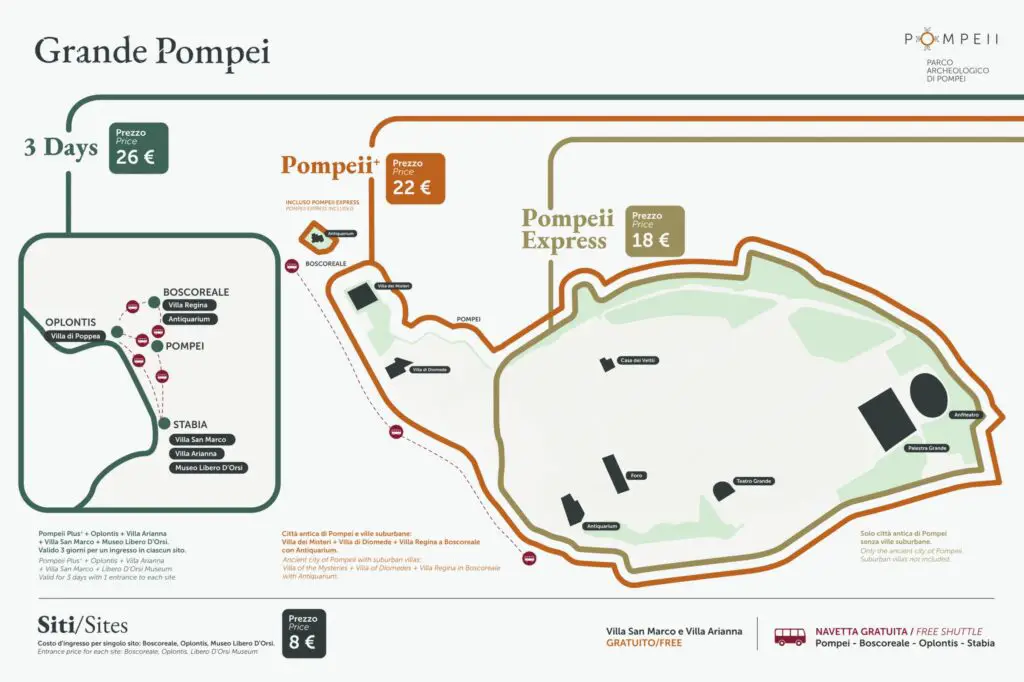
Tickets can be purchased on-site at one of the various entrances. However, I strongly recommend that you buy your ticket on the Pompeii’s official website well in advance to avoid the queues which, especially during the high season, can become excessively long.

The most up-to-date prices can (and should!) be found on the official website.
💡 EXTRA TIP: On the first Sunday of every month, admission to Pompeii is free. These tickets can be bought at the ticket offices at the entrance. Just be aware that in this case, there is a limit to the number of visitors. In addition, tickets are free for visitors up to the age of 18 and have a reduced price for visitors up to the age of 24.
Is it worth booking a guided tour of Pompeii?
If you’re like me and don’t know much about archaeology and/or history, then I highly recommend booking a Pompeii guided tour. This option indeed makes the visit a bit more expensive, but believe me, you’ll get a lot more out of it.
Firstly, the ruins of Pompeii are huge. You might find it difficult to choose which sites to visit. If you visit with a guide, they will take you to the most relevant sites, taking away the indecision about which ones to visit.


On the other hand, the complex has very few explanations along the way. So, visiting with a guide is certainly the option that will allow you to learn more about the history of Pompeii.
What’s more, the guide will draw your attention to details that you would hardly notice on your own.

I booked this 2-hour guided tour of Pompeii with an archaeologist for 50€ and I loved it. The guide was very knowledgeable about the history of Pompeii at all times, and her explanations were fundamental to getting the most out of the visit. I feel that, without a guide, I would have finished the visit without knowing half of what I learnt.
What’s more, the group was relatively small (around 20 people), which also allowed us to better understand each of the explanations. The price of the tour included entry to Pompeii and, at the end of the tour, we had the option of staying in the complex as long as we wanted 😄.
What are Pompeii’s visiting hours?
One thing that it’s important to know before visiting Pompeii is the opening hours of the Pompeii ruins. Firstly, the opening hours vary according to the time of year. It always opens at 9 am, but from April to October it closes at 7 pm and in all other months it closes at 5 pm.
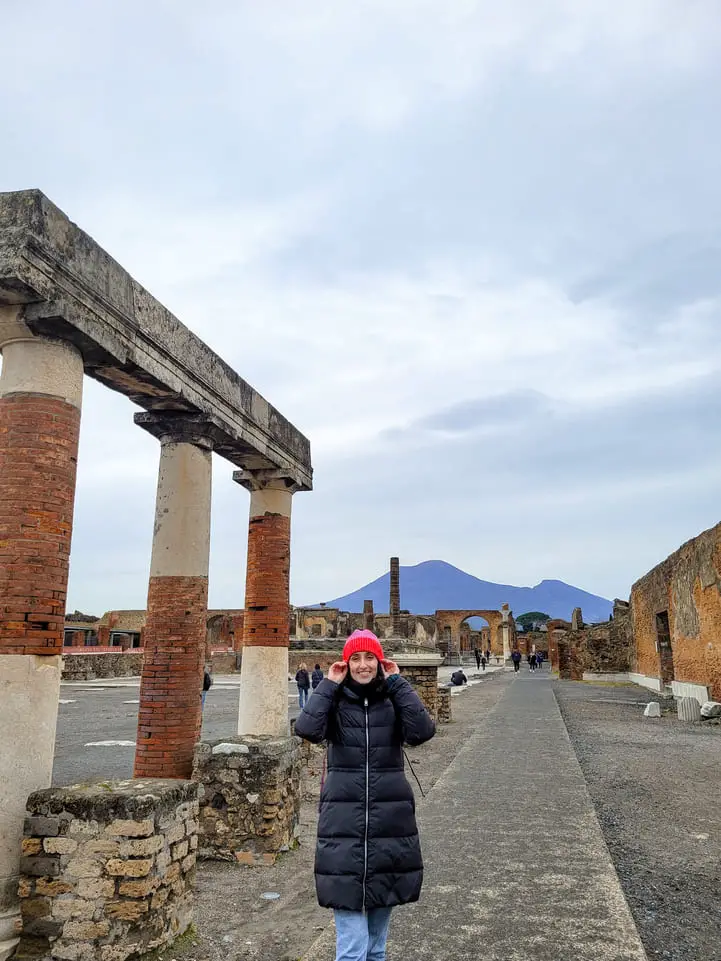

In addition, the points of interest inside the site have different opening hours to Pompeii’s main entrances. So, if you want to visit a particular place in Pompeii, check the opening hours beforehand to avoid any disappointments.
You can find all the latest information on Pompeii’s opening hours here.
💼 TRAVEL INSURANCE: Unexpected events happen anywhere in the world, so I always recommend getting travel insurance. I regularly use Heymondo, which offers some of the highest coverages on the market at very competitive prices. As well as covering medical expenses, Heymondo’s insurance also covers the loss or theft of luggage, electronic equipment and more. They also have a 24/7 customer service through their App. As A Ticket to Take Off reader, you get a 5% discount when purchasing Heymondo insurance. The purchase must be made using this link, and the price shown on the website already includes the discount.
What is the best entrance to Pompeii?
There are three entrances to the site of Pompeii: Porta Marina, Piazza Anfiteatro and Piazza Esedra. Choosing the best entrance to visit Pompeii depends on several factors.

However, if you’re planning to get to Pompeii by train on the Circumvesuviana line, the best entrance is undoubtedly Porta Marina, as it’s the closest to the railway station.
Even if you’re travelling by car, Porta Marina might be the best option as well, as you can park close by.
Where to stay when visiting Pompeii?
One of the most popular options is to visit Pompeii while staying in Naples. That’s exactly what I did and I highly recommend it, as the journey between Naples and Pompeii is rather quick.
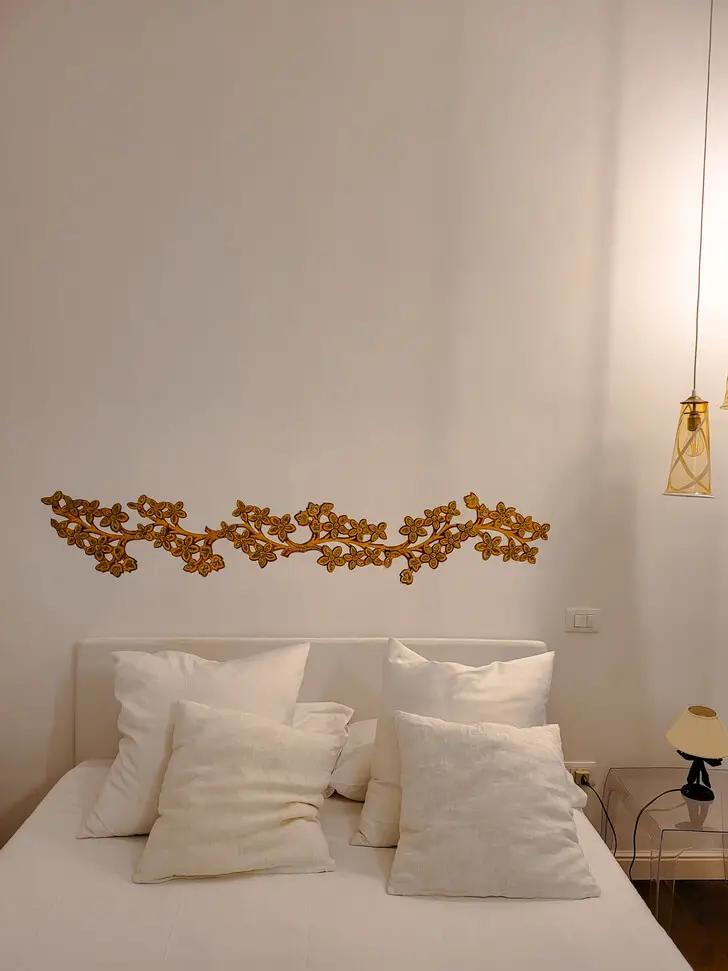

In Naples, I chose a very central and relatively modern accommodation with excellent value for money – Domus Sansevero. It was perfect for visiting Naples, as it was right in the historic centre of the city.
For visiting Pompeii, this accommodation is also an excellent choice, as it’s relatively close to the train station where you can catch the train to Pompeii (1.6 kilometres walk).
Even so, if you prefer, there are some accommodation options in Pompeii, which you can also consider if you want to stay longer near the archaeological park.
Best places to visit in Pompeii
As I’ve already mentioned throughout this post, Pompeii is a huge complex and it will be difficult to visit all of it in one day, let alone in a few hours.
It’s therefore not a bad idea to research the places you’d really like to visit in Pompeii beforehand to make sure you at least manage to visit those.

So, here are a few suggestions of the places I found most interesting in Pompeii. I haven’t had the opportunity to visit all of the sites on this list, but here are some of the must-see sites in Pompeii:
- Basilica – Despite its name, it wasn’t a religious place, but rather a place where the city’s business was done and justice was served;
- Civil Forum – the civil centre of the ancient city of Pompeii and one of its most important sites;
- Temple of Jupiter – on sunny days, you get a perfect view of Vesuvius from here;
- Stabian Baths – one of the oldest examples of Roman baths in the world;
- Thermopolium – There are a few of these scattered around Pompeii, and this is where drinks and food were sold, especially to the lower-class inhabitants of Pompeii;
- Temple of Fortuna Augusta
- House of the Large Fountain – one of the most beautiful places in Pompeii due to its mosaic fountain;
- House of the wounded bear – there’s also a fountain worth admiring;
- House of the Prince of Naples
- House of the Vettii
- Lupanar (brothel) – one of the quirkiest places in Pompeii. This used to be the town’s brothel and, as well as the small rooms, there are also several erotic paintings on the walls;
- Large Theatre
- Amphitheatre – one of the oldest ancient Roman amphitheatres that still exists today

Finally, there are the famous bodies of Pompeii. They are visible in some parts of the complex (one of the most popular places is the Garden of the Fugitives), but can also be admired in the Antiquarium – a museum inside Pompeii.
So, I hope this blog post has provided you all the tips for exploring Pompeii.
Disclaimer: this post may contain some affiliate links, which means I get a small commission if you buy something through my links. This doesn’t represent any additional cost to you and you’ll be supporting my work here on the blog😊




